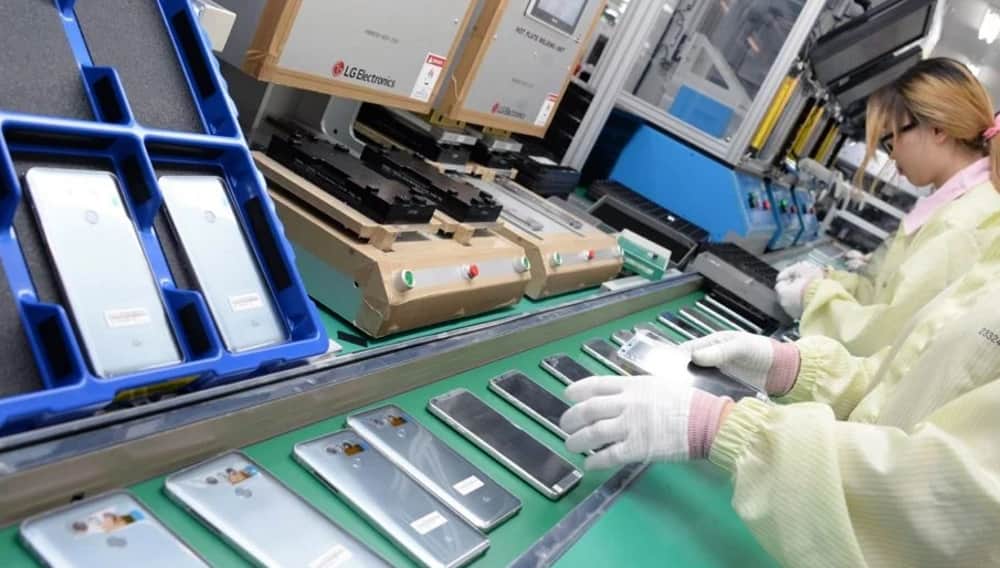In 2025, smartphones are smarter, faster, and more powerful than ever. But there’s a growing question that conscious consumers are asking: At what cost to the environment? While innovation races ahead, the ecological footprint of smartphone production is becoming harder to ignore.
In this blog, we’ll uncover:
-
The hidden environmental impact of smartphones
-
The lifecycle of your device
-
What manufacturers are (or aren’t) doing to go green
-
And how you can make smarter, sustainable choices as a consumer
Table of Contents
ToggleThe Big Picture: Why Smartphone Production Matters

Smartphones may be small, but their production process is anything but light on the planet.
According to Greenpeace, more than 80% of a smartphone’s total carbon footprint comes from the manufacturing phase. That includes everything from mining raw materials to assembling complex components and shipping devices worldwide.
In 2025, over 1.6 billion smartphones are expected to be shipped globally. Now imagine the carbon emissions, toxic waste, and energy consumption behind that number.
⛏️ Raw Materials: The Dirty Start
Your smartphone is made of over 60 different elements, including:
-
Lithium (battery)
-
Cobalt (battery)
-
Rare earth metals (screen and internal components)
-
Gold, silver, and copper (wiring)
Most of these are mined in regions with poor labor laws, under unsafe working conditions. For example, cobalt mining in the Democratic Republic of Congo has been linked to child labor and severe environmental degradation.
Plus, mining operations release harmful chemicals, greenhouse gases, and wastewater, damaging ecosystems and local communities.
Manufacturing: Energy-Intensive & Polluting
Once raw materials are mined, they’re shipped to factories—mostly located in China, Vietnam, India, and South Korea.
This stage involves:
-
High energy consumption
-
Use of hazardous chemicals
-
Water pollution from factory waste
-
CO2 emissions from assembly lines
Even with advancements in cleaner production, the average smartphone still contributes 55–95 kg of CO2 emissions during manufacturing in 2025.
Packaging & Shipping: The Hidden Emissions
Think your phone just “magically” appears in a store? Think again.
Phones are:
-
Packaged in boxes made from plastic, inks, and glues
-
Transported via air, sea, and land shipping methods
-
Stored in energy-intensive warehouses
All of this adds more emissions before the device even reaches your hand.
Short Lifecycles: The Upgrade Culture Problem
The average smartphone is replaced every 2–3 years. But manufacturers continue releasing multiple models annually, encouraging upgrades through marketing and software limitations.
Even though phones today can last longer than ever, many are discarded early, ending up in landfills or junk drawers.
️ E-Waste: A Global Crisis
Smartphones contribute to the 57+ million tons of e-waste generated each year. Most of it is not recycled properly and ends up in:
-
Landfills (where toxic chemicals leach into soil)
-
Informal recycling yards (where parts are burned or acid-washed)
-
Developing nations with limited recycling infrastructure
In 2025, only 17.4% of global e-waste is formally recycled.
✅ What Smartphone Brands Are Doing (and Not Doing)

Some major brands have stepped up sustainability efforts, but it’s far from perfect.
Apple:
-
Uses 100% recycled aluminum in newer iPhones
-
Offers trade-in and recycling programs
-
But still restricts repairability with proprietary tools
Samsung:
-
Pledged to reach net-zero emissions by 2050
-
Includes recycled materials in Galaxy devices
-
But releases numerous models yearly, pushing overconsumption
Fairphone (a niche but promising brand):
-
Modular phones with replaceable parts
-
Ethically sourced materials
-
Transparent supply chain
Infinix, Xiaomi, Realme (popular budget brands):
-
Offer great performance at low cost
-
But lack transparent environmental policies or recycling initiatives
How You Can Make Sustainable Smartphone Choices
You don’t need to stop using smartphones to help the planet—just make smarter choices. Here’s how:
1. Buy Only When You Need To
Avoid upgrading every year. If your phone still works well, keep it for 4–5 years. You’ll save money and reduce demand.
2. ️ Repair, Don’t Replace
Replace batteries, screens, or ports instead of buying a new device. Use certified repair centers or DIY if you’re skilled.
3. ♻️ Choose Eco-Friendly Brands
Support companies that prioritize sustainability, offer trade-in programs, and use recycled materials.
4. Buy Refurbished
Refurbished phones are tested, certified, and much more eco-friendly than new ones. You get a great phone with a smaller footprint.
5. Optimize Battery Life
Extend your phone’s life by charging smartly, avoiding overheating, and reducing screen-on time.
6. Recycle Responsibly
Never throw a phone in the trash. Use:
-
Brand take-back programs
-
Local e-waste collection points
-
NGOs that accept electronics
7. Use Modular Accessories
Skip fast-fashion cases and get long-lasting, compostable, or modular phone cases and accessories.
The Future of Sustainable Smartphones
Sustainability is slowly becoming a priority in the mobile tech world. In 2025 and beyond, we can expect:
-
Wider adoption of modular phones
-
Standardized repair laws (Right to Repair)
-
More recycled materials
-
Eco-labels showing a phone’s environmental score
But consumers play a big part. Every conscious choice counts.
Final Thoughts
Smartphones have revolutionized the world, but they also carry a heavy environmental price. From mining rare metals to contributing to e-waste mountains, every stage of production leaves a mark.
In 2025, being a smart consumer isn’t just about getting the best specs—it’s about making informed, sustainable choices.
Buy less, choose well, and always recycle. Because the planet is the most important connection we’ve got.





